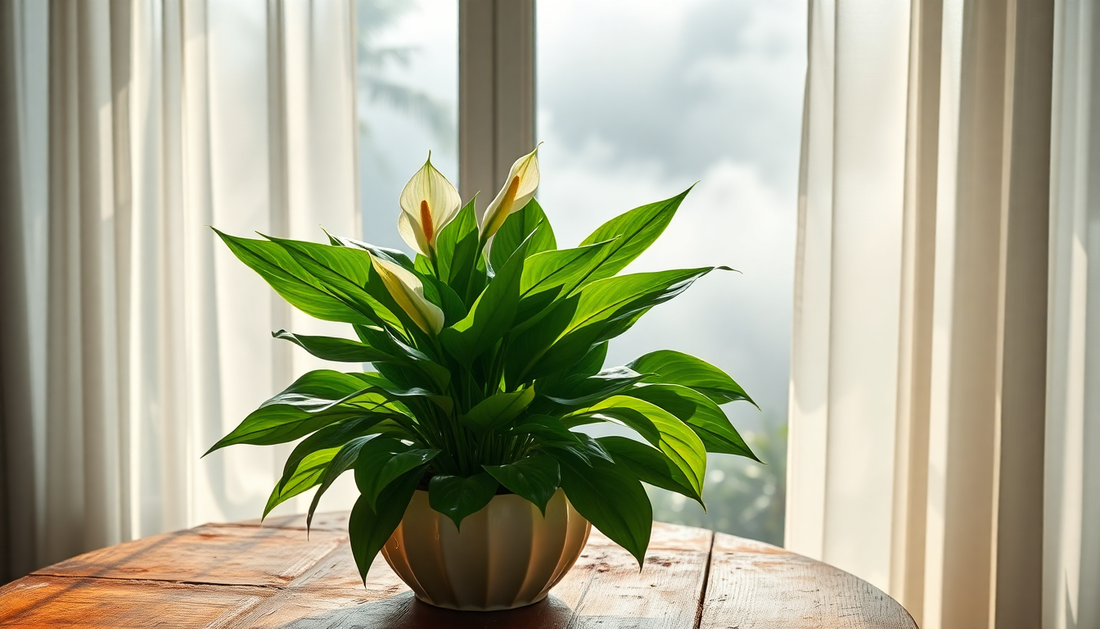
Caring for Your Peace Lily in Humid Climates
Share
As a plant enthusiast, you know the joy of watching your indoor greenery thrive. But when it comes to caring for plants in humid climates, it can be a delicate balance. One plant that stands out as a resilient and beautiful addition to any home is the peace lily. In this comprehensive guide, we'll explore the best practices for caring for your peace lily in humid environments, ensuring it flourishes and brings a touch of serenity to your living space.
Understanding the Peace Lily
The peace lily, scientifically known as Spathiphyllum, is a popular houseplant known for its striking white flowers and lush, green foliage. Native to the tropical regions of the Americas, these plants are well-suited to humid conditions, making them a perfect choice for homes and offices in warm, moist climates.
One of the key features of the peace lily is its ability to adapt to a wide range of lighting conditions, from bright, indirect light to more shaded areas. This versatility makes them a great option for those with limited natural light in their homes or offices.
Optimal Humidity Levels
The peace lily thrives in humid environments, with an ideal humidity range of 40-60%. In humid climates, this can often be achieved naturally, but in drier areas, you may need to take additional steps to maintain the proper moisture levels.
One effective way to increase humidity around your peace lily is to use a pebble tray. Simply fill a tray with pebbles and water, then place your plant's pot on top. As the water evaporates, it will create a humid microclimate around the plant. You can also consider using a humidifier, especially during the drier winter months, to ensure your peace lily receives the moisture it needs.
Watering and Soil Requirements
Proper watering is crucial for the health of your peace lily. These plants prefer consistently moist soil, but they are also sensitive to overwatering. The best approach is to water your peace lily when the top inch or two of the soil becomes dry to the touch.
When it comes to soil, peace lilies thrive in well-draining, nutrient-rich potting mixes. Look for a soil that is specifically formulated for tropical plants or one that contains a blend of peat moss, perlite, and compost. Avoid heavy, dense soils, as they can lead to root rot and other issues.
Lighting and Temperature
As mentioned earlier, peace lilies are adaptable to a range of lighting conditions, but they do prefer bright, indirect light. Avoid placing them in direct sunlight, as this can scorch the delicate leaves. If your peace lily is not receiving enough light, you may notice the leaves start to droop or the plant becomes leggy.
In terms of temperature, peace lilies prefer a range of 65-85°F (18-29°C). Sudden temperature changes or exposure to cold drafts can stress the plant and cause it to wilt or drop its leaves.
Fertilizing and Pruning
To keep your peace lily thriving, it's important to fertilize it regularly. Use a balanced, water-soluble fertilizer every two to four weeks during the growing season (spring and summer). Avoid over-fertilizing, as this can lead to salt buildup in the soil and damage the plant.
Pruning your peace lily is also an important aspect of its care. Remove any dead or dying leaves and flowers to encourage new growth and maintain the plant's overall appearance. You can also prune the plant to shape it or control its size, if needed.
Troubleshooting Common Issues
Even with the best care, your peace lily may encounter some common issues. Here are a few to watch out for and how to address them:
Wilting Leaves
If your peace lily's leaves start to droop or wilt, it's likely a sign of underwatering. Check the soil moisture and water the plant if it feels dry to the touch.
Brown or Yellow Leaves
Discolored leaves can be a sign of overwatering, underwatering, or nutrient deficiencies. Adjust your watering schedule and consider fertilizing the plant.
Pests
Peace lilies can be susceptible to common houseplant pests, such as spider mites, mealybugs, or scale insects. Inspect the plant regularly and treat any infestations promptly.
By understanding the specific needs of your peace lily and providing the right care, you can enjoy the beauty and serenity of this resilient plant in your humid climate. With a little attention and the right techniques, your peace lily will thrive and bring a touch of nature to your indoor space.
Conclusion
Caring for a peace lily in a humid climate may require a bit of extra attention, but the rewards are well worth it. By maintaining the proper humidity levels, watering schedule, and soil conditions, you can ensure your peace lily flourishes and brings a sense of tranquility to your living space. Remember to monitor for common issues and adjust your care routine as needed. With the right approach, your peace lily will continue to be a beautiful and low-maintenance addition to your indoor garden.
Happy gardening!

